Research
Tobias Brixner group (Homepage)
Femtosecond spectroscopy and quantum control
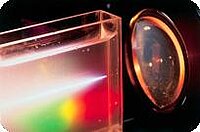
Our group works on (multidimensional) spectroscopy of ultrafast molecular processes, studies their control on a quantum-mechanical level and is engaged in the research field of ultrafast nano-optics. Dynamic processes in molecules proceed on a timescale of few femtoseconds up to nanoseconds. We develop and apply spectroscopic methods to make such phenomena visible. Key to obtaining this insight is the ability to manipulate the temporal evolution of extremely short light pulses (“pulse shaping”). One of our goals is to combine ultrahigh spatial and ultrahigh temporal resolution. Thus we monitor and control, for example, charge and energy transfer in molecular aggregates, chemical reaction dynamics, or plasmon propagation in nanostructures.
Bernd Engels group (Homepage)
Theoretical quantum chemistry
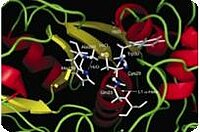
Our research concentrates on bio-molecular chemistry and material science. Our investigations in material science focus on exciton and charge carrier transfer processes in molecular aggregates of organic semi-conductors. Our computations have revealed very efficient exciton trapping processes which result due to photo-induced intermolecular motions. From the information we could derive rules for a design of improved perylene-based materials. In bio-molecular chemistry we study interactions between ligands and enzymes including the mode of action of covalently interacting inhibitors. One focus in these works is the development of covalent-reversible inhibitors. For getting information we employ quantum chemical (QM), molecular mechanical (MM) as well as hybrid approaches (QM/MM) to compute the underlying potential energy landscapes for ground and excited states. They are used to determine important structures as well as reaction barriers and profiles. Finally, we perform method developments in the field of global optimization algorithms and designed a new force field which includes charge penetration effects. These new approaches are implemented into the program package CAST which also contains efficiently parallelized MD and optimization tools.
Volker Engel group (Homepage)
Theoretical quantum dynamics and spectroscopy
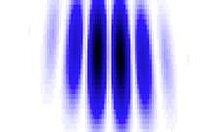
Unsere Forschungsinteressen liegen auf dem Gebiet der Theorie der Kern- und Elektronendynamik in Laserfeldern. Zur Beschreibung laserinduzierter Prozesse in Molekülen benutzen wir numerische Lösungen der zeitabhängigen Schrödingergleichung. Es ist dann möglich, Femtosekunden-zeitaufgelöste Experimente zu beschreiben, welche in auf einer ultrakurzen Zeitskala die Dynamik in Molekülen (zeitliche Geometrieänderungen, Ablauf chemischer Reaktionen) verfolgen. Aktuell befassen wir uns mit Transportprozessen in Molekülaggregaten sowie der linearen (Absorption, Emission, CD) und nicht-linearen (Vierwellenmischung) Spektroskopie solcher Systeme. Ein weiterer Schwerpunkt liegt auf der Untersuchung der Dynamik in Molekülen bei welchen aufgrund starker Elektronen-Kern Kopplung die Born-Oppenheimer Näherung versagt.
Ingo Fischer group (Homepage)
Photochemistry and chemical dynamics
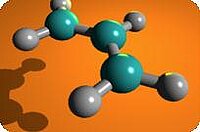
Our research concentrates on molecular spectroscopy, photochemistry and reaction dynamics. Here "dynamics" means to unravel the microscopic details of a chemical reaction. Although we predominately study isolated molecules in the gas phase, we also investigate chemical reactions in solution. The focus is on reactive open-shell species, like hydrocarbon radicals and carbenes that are relevant in the chemistry of combustion processes, the atmosphere and interstellar space. We use various complementary experimental methods. like time-resolved spectroscopy, vibrational, electronic and photofragment spectroscopy, and photoionisation by synchroton radiation. As some projects are carried out at external facilities (i.e. synchrotron radiation sources), we foster a number of international cooperations.
Tobias Hertel group (Homepage)
Nanosurface spectroscopy
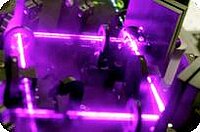
Processes at nanosurfaces are key for growth, properties and function of nanomaterials. We develop tools and methods to study phenomena at the nanoparticle-solvent interface. We focus on single-wall carbon nanotubes as model systems which are explored at the ensemble and single particle levels by combining a variety of continuous wave, time-resolved and ultrafast optical probes with microfluidic technology and colloidal chemistry.
Roland Mitric group
Quantum-classical dynamics, photochemistry and laser control
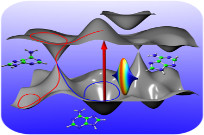
The Mitric group works on the development of methods for simulation and laser control of light-induced dynamics in complex molecular systems based on mixed quantum-classical approaches. For this purpose, the efficient (semi-)classical description of the nuclear dynamics is combined with the quantum chemical treatment of the electronic structure, including nonadiabatic effects and the interaction with light. Our aim is to gain a fundamental understanding of photochemistry and photophysics in complex systems and to apply this knowledge to the development of novel materials. The present research areas include:
a) Light-induced nonadiabatic photodynamics of molecules in complex environments, metal clusters and hybrid nanostructures
b) Coherent control of photochemistry in complex systems by shaped laser pulses
c) Theory of ultrafast spectroscopy and molecular imaging
d) Theoretical design of novel optical, catalytic and plasmonic materials






